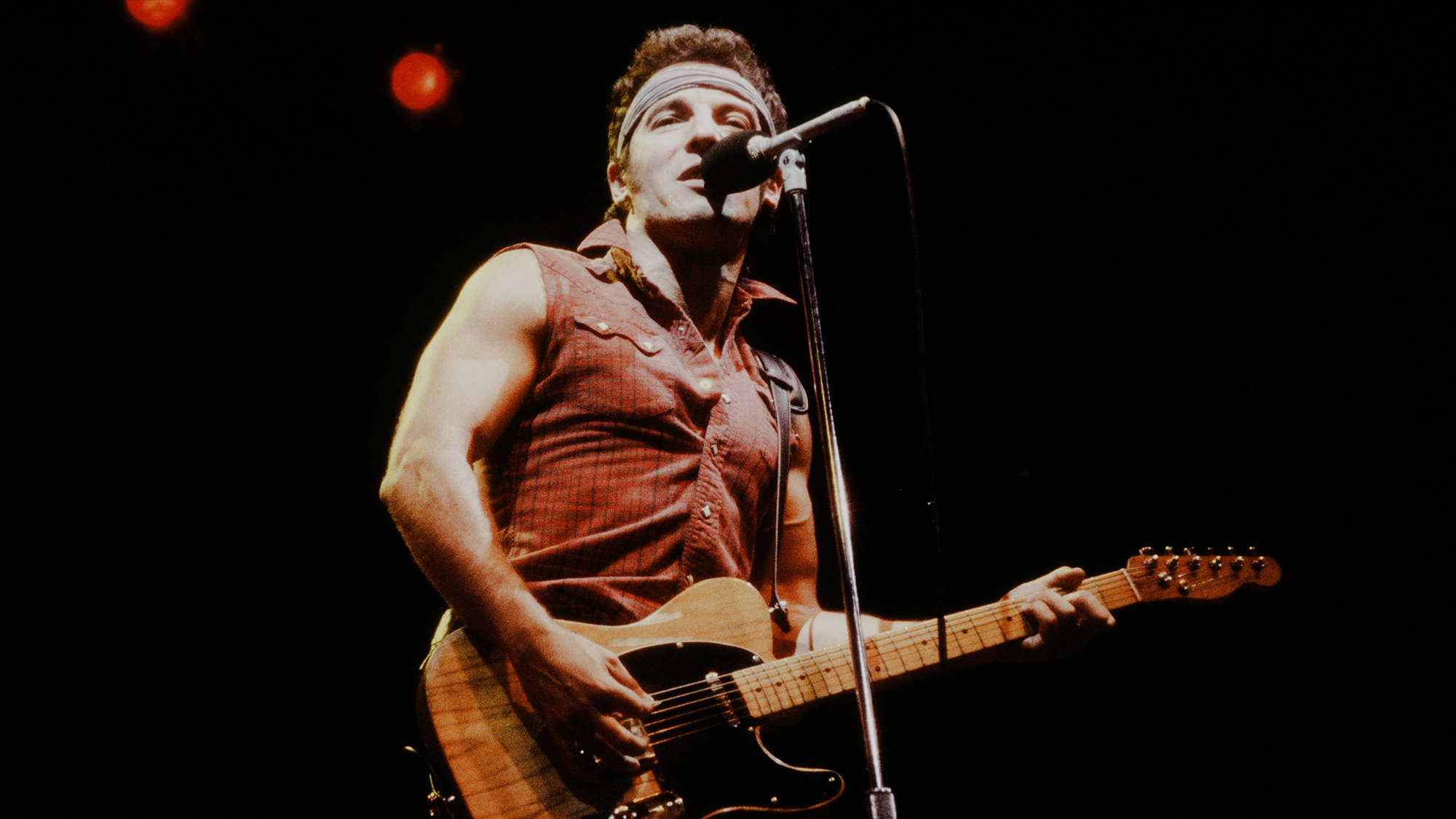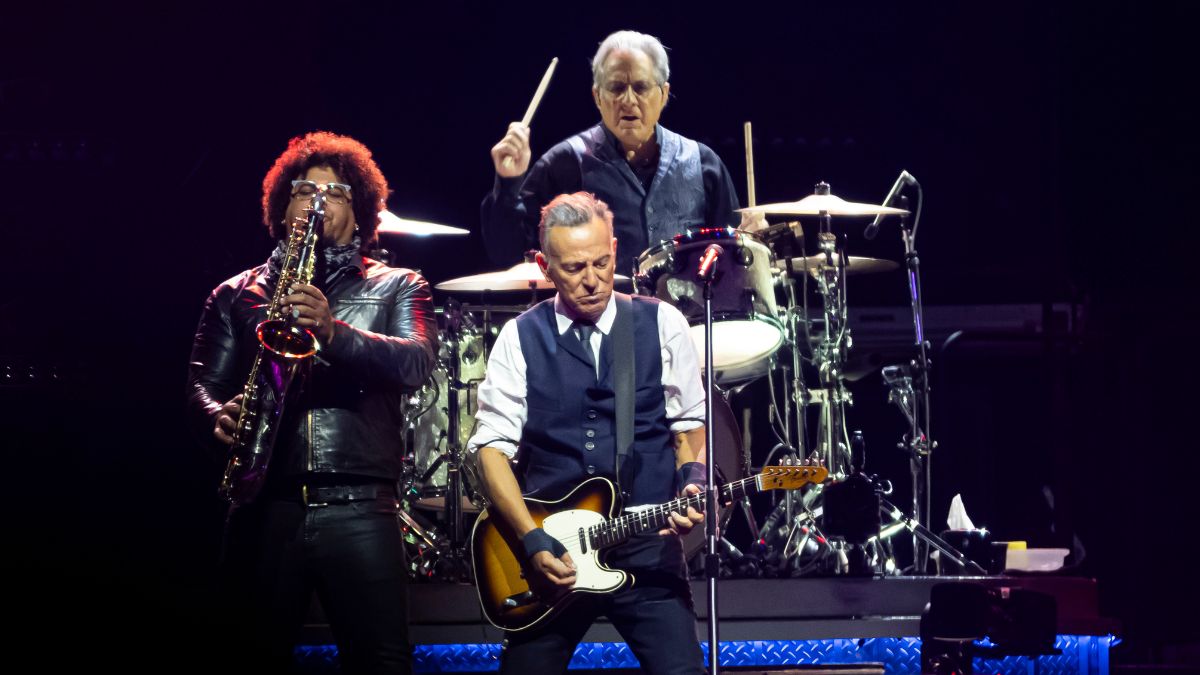“It became the record I made, not necessarily the record that I was interested in making.” Bruce Springsteen says his best-selling album didn’t match his creative vision
The record's chart-smashing success hasn’t changed his outlook on it four decades later

Bruce Springsteen's seventh album, Born in the U.S.A. topped the charts in 12 different countries when it was released on June 4, 1984. Its success didn't stop there, either. Certified Platinum in just as many countries, including 17-times Platinum in the U.S. and New Zealand, it remains his best-selling album, with more than 30 million worldwide sales.
Those figures mean it has outsold Dire Straits' Brothers in Arms, the Beatles' Abbey Road, and Pink Floyd's political-rock epic The Wall. That's no mean feat.
So it may come as a surprise to learn that the American songwriter wasn't happy with the album he'd created. Writing in the liner notes of Tracks II: The Lost Albums, a new seven-disc compilation of unheard tracks written between 1983 and 2018, Springsteen says the record didn't “connect” like its predecessors did. But its chart-obliterating success may point otherwise.
Some 41 years later, his sentiment hasn't changed despite its success, and he's justified his thinking in conversation with Rolling Stone.
“It was a record I put out. It became the record I made, not necessarily the record that I was interested in making,” he underscores.
“I was interested in taking [it’s 1982 predecessor] Nebraska and making a full record that had somewhat that same feeling. If you hear [the opening and closing tracks] ‘My Hometown’ and ‘Born in the U.S.A.,’ they were sort of the bookends I intended.
“The rest of the stuff was just what I had at the time. Those were the songs I wrote. Those were the songs I recorded.”
All the latest guitar news, interviews, lessons, reviews, deals and more, direct to your inbox!
There’s a contrast here between Springsteen’s artistic vision and integrity, what resonated with him at that time, and what resonated with the listener. The fact that the record is one of the best-selling rock albums of the last 50 years hasn’t diluted his feelings toward it.
“From conception to execution, it was not necessarily the record that I had planned on [making], but that’s the way creativity works,” he concedes. “You go in the studio, you have an idea. It’s not necessarily what you come out with. So that was just the situation of that record for me personally.”
I suppose maybe I was looking for something darker. The themes of Nebraska are disguised somewhat into pop music.”
— Bruce Springsteen
Pressed on details as to why the record failed to hit the bull's-eye of his creative hopes, his answer belies the uplifting "power to the people" message the album carried, particularly for the working class.
“I suppose maybe I was looking for something darker,” he ponders. “But outside of that, the themes of Nebraska are in there. In ‘Downbound Train’, they’re in there. They’re disguised somewhat into pop music.”
Of its predecessor's more shadowy lyrical content, Springsteen delivered an explanation in his 2003 book, Bruce Springsteen: Songs. “If there's a theme that runs through the record,” he wrote, “it's the thin line between stability and that moment when time stops and everything goes to black, when the things that connect you to your world — your job, your family, friends, your faith, the love and grace in your heart — fail you.”
Born in the U.S.A., it could be argued, wrestled with similar topics but found brighter conclusions from its 12 tracks. It's something that could be attributed to its success, especially when considering that Nebraska, which has sold 1.5 million copies, was, for music critics at least, handicapped by the bleakness of its outlook. Born in the U.S.A. was its antidote.

Springsteen's main guitar at the time was his now-retired Fender Telecaster "mutt" that he acquired nearly half a century ago. It was featured on the cover of his breakthrough album, Born to Run, and has “been in every club, theater, arena, and stadium across America, and most of the world,” , he told Stephen Colbert in 2021.
Featuring a swamp ash body, a neck from a Fender Esquire, and a black pickguard, it cost him $185 in 1972. He bought it from a luthier in Neptune, New Jersey, named Phil Petillo. He has since called its acquisition “the deal of my life.”
"Anything else I pick up,” he told Colbert, “it's a guitar. I've played this for so long that it just became part of [my] natural physique.”
After tireless touring, it was finally retired in the mid 2000s, but has been dusted off for special shows, including his Super Bowl XLIII halftime performance in 2009.
Insurance estimates as of October 2021 valued the guitar between $1,000,000 to $5,000,000.
A freelance writer with a penchant for music that gets weird, Phil is a regular contributor to Prog, Guitar World, and Total Guitar magazines and is especially keen on shining a light on unknown artists. Outside of the journalism realm, you can find him writing angular riffs in progressive metal band, Prognosis, in which he slings an 8-string Strandberg Boden Original, churning that low string through a variety of tunings. He's also a published author and is currently penning his debut novel which chucks fantasy, mythology and humanity into a great big melting pot.


